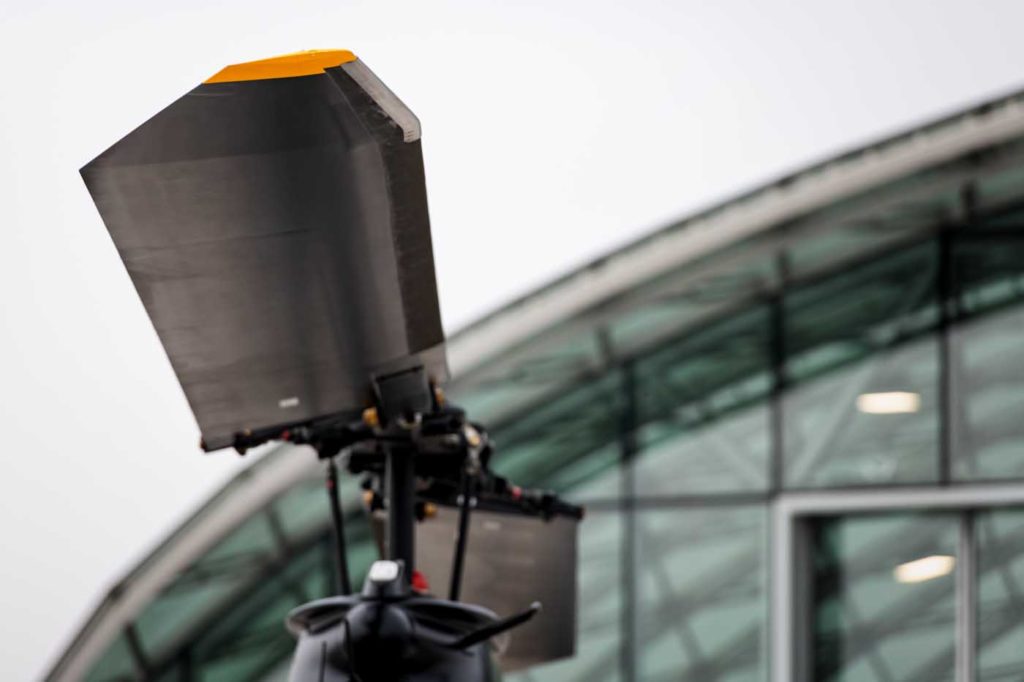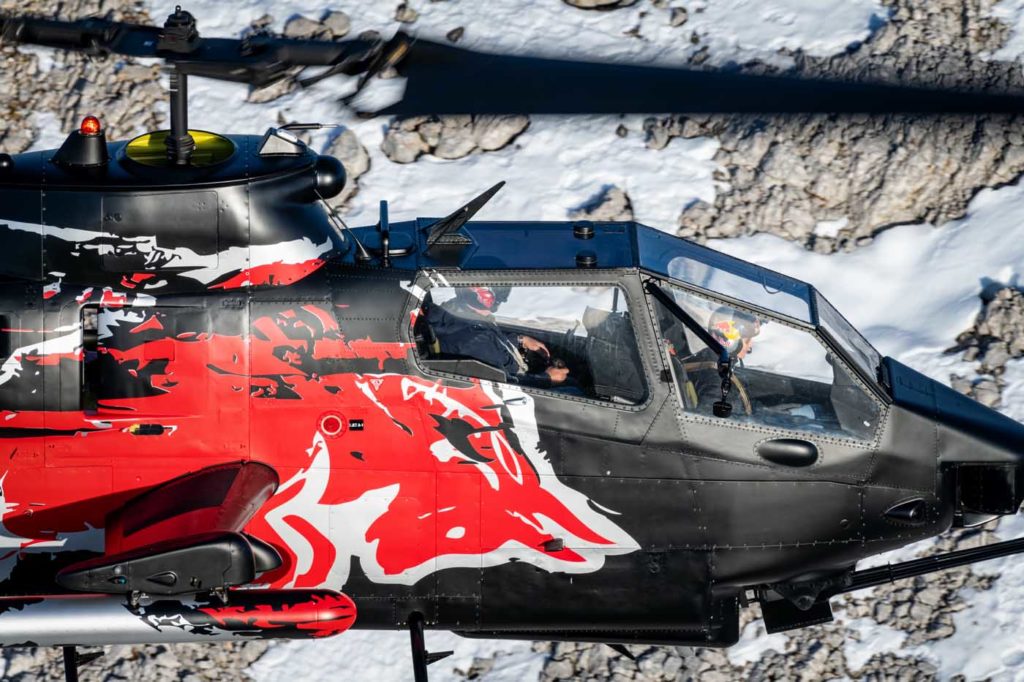Photos by Lloyd Horgan
It’s a brilliant, blue-sky day in Salzburg, Austria — provided you’re a thousand feet over the surface. At the surface, not so much. Low clouds and fog have poured into the Salzach River Valley, casting a gray pall that portends the beginning of winter. The Salzburg Airport is under instrument flight rules. It’s starting to look like we won’t be able to fly.

I’m at Red Bull’s legendary Hangar-7, the soaring glass-and-steel structure that along with Hangar-8, its maintenance counterpart across the ramp, houses the company’s aircraft collection. The last time I was here was in August 2019, when I flew the world’s only airworthy Bristol Sycamore with Siegfried “Blacky” Schwarz, chief rotary-wing pilot for Red Bull’s in-house aerobatic display team, the Flying Bulls.
What a difference two years makes. Back then, at the height of summer, the streets of Mozart’s hometown were packed with music lovers enjoying the annual Salzburg Festival, and social distancing was the last thing on anyone’s mind. This time around, my trip in gloomy November coincides not only with the European Rotors trade show, but also with a growing Covid surge that will soon force Austria into lockdown. Masks and vaccinations are mandatory, and a rapid Covid test is my first order of business upon stepping into Hangar-8.
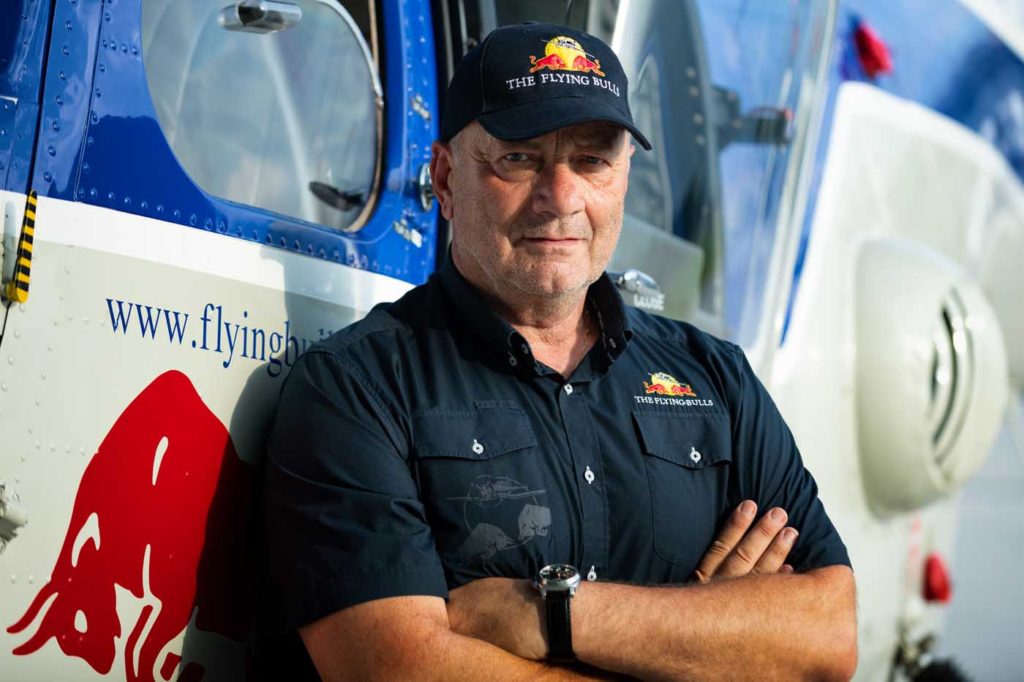
Even so, it’s great to be back. Hangar-7 is a mecca for aviation enthusiasts; a gorgeous space filled with meticulously restored aircraft that should be on any pilot’s bucket list. Just soaking up the atmosphere is invigorating after the forced isolation of an ongoing pandemic, although if all goes well, I’ll get my hands on a helicopter that also had an extended absence from Salzburg — Red Bull’s newly rebuilt Bell Cobra.
We just need a break in the weather.
The original attack helicopter
The Cobra that is now in Red Bull’s collection is a former U.S. Army AH-1F model, serial number 67-15819. Originally built in 1967, it was converted to an AH-1S in 1976 (the F designation was applied to certain modernized S models.) Following its military career, it was used as a training aid in an aircraft maintenance school, where it was discovered by Northwest Helicopters CEO and avid helicopter collector Brian Reynolds in 2010.
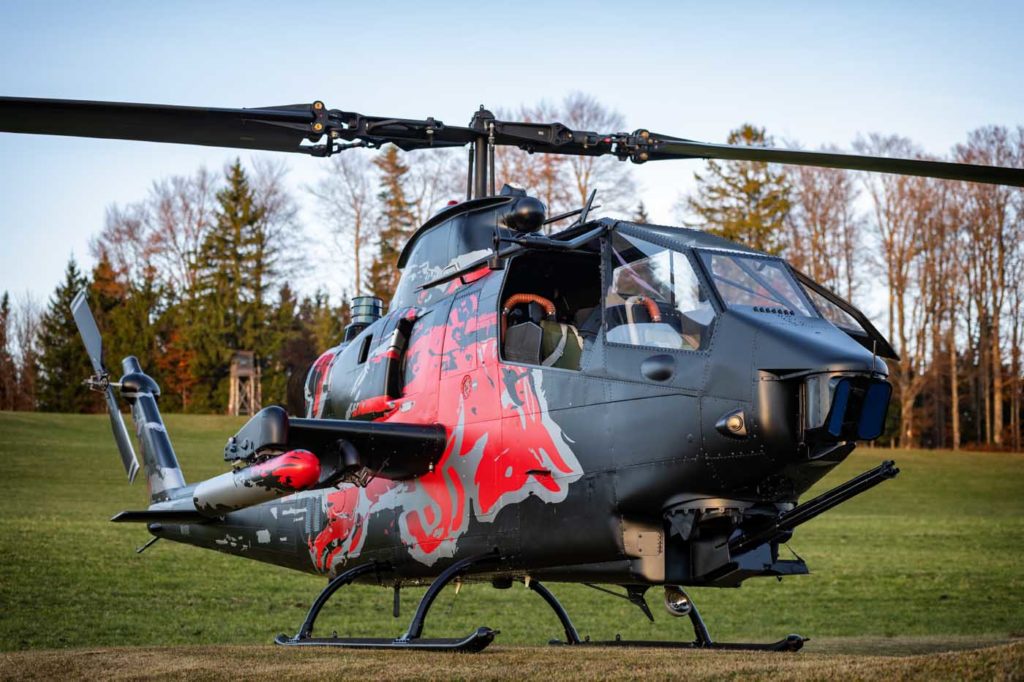
The AH-1F replaces Red Bull’s previous Cobra, a TAH model of the type used for training pilots. Built from spare parts in the U.S. by pilot and mechanic Chuck Aaron, who later flew aerobatics for the company, that helicopter was acquired by Red Bull in 2004. The fully demilitarized aircraft was transferred to Austria after a lengthy export process, still with an experimental category registration from the Federal Aviation Administration and tail number N11FX.
The exotic attack helicopter was an instant hit across the pond. “We flew in many shows all over Europe,” said Schwarz, who is known best for his aerobatic displays in Red Bull’s MBB Bo.105s, but flies every helicopter in the Flying Bulls’ inventory. In May 2017, he had just finished a display at the opening of a suspension bridge in Reutte, Austria, when he came in to land at the small local airport for fuel. As he approached the structure where the fuel pump was located, the Cobra’s massive main rotor blades caught the edge of the building, ripping the aircraft apart in a matter of seconds. (Fortunately, no one was injured.)
For Schwarz, who has spent his career engaged in high-risk missions — first as a mountain rescue pilot, then as one of only a handful of pilots qualified to fly helicopter aerobatics — the accident was a reminder of the dangers of complacency, and just how quickly even a routine maneuver can go wrong. With those lessons learned, the Flying Bulls set about seeking a replacement Cobra, eventually commissioning Reynolds to restore the aircraft that had been used as a maintenance trainer.
To supplement the rebuild, Red Bull transferred some of its wreckage to Northwest Helicopters’ facility in Olympia, Washington, and N11FX was ultimately reincarnated with the same tail number. Following another lengthy export process, the Cobra returned to Salzburg in March 2021.
It’s no mystery why the Flying Bulls were so eager to replace their Cobra. Dating back to the Vietnam War, and derived from the Bell UH-1 Huey, the Model 209/AH-1 is an iconic attack helicopter, as striking on static display as it is in the air. It stands just under 14 feet (around four meters) tall, yet its tandem seat cockpit is only around three feet (90 centimeters) wide, giving it a sleek, mean look that evokes its venomous nickname. Red Bull’s Cobra is made even more impressive by a black, red, and silver paint scheme that riffs off the fighting bulls in the company’s logo.
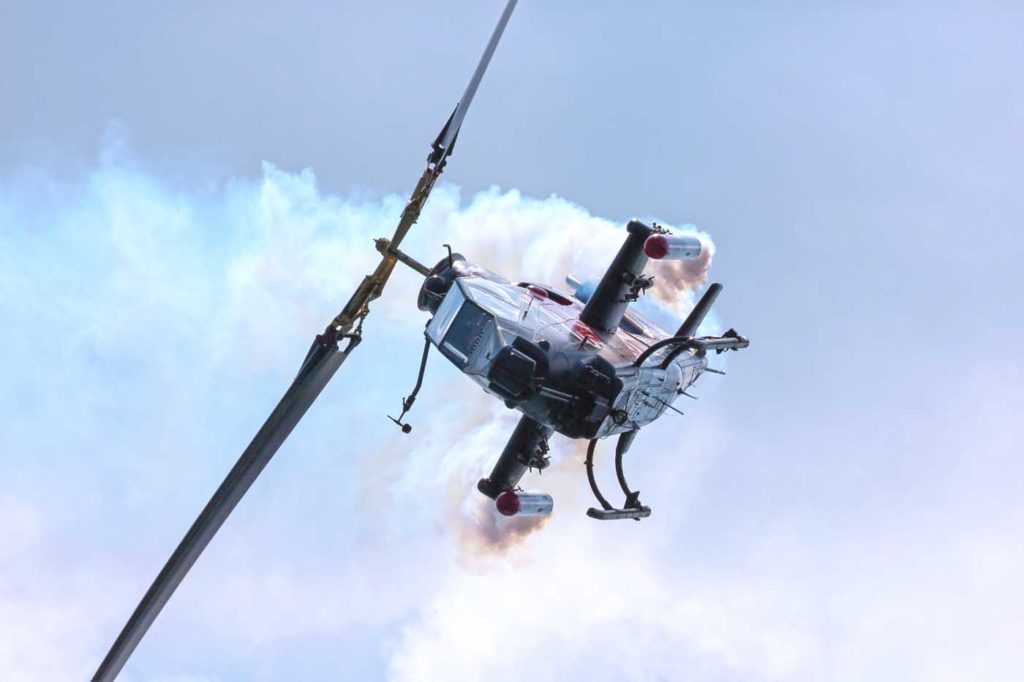
The F model is powered by a single 1,800-horsepower Lycoming T53-L-703 engine and cruises at up to 150 knots (275 kilometers per hour) with a nominal never-exceed speed of 190 knots (350 km/h). For its service with the U.S. Army, the aircraft was equipped with a 20-mm three-barreled cannon on the nose, wing-mounted rockets, and tube-launched optically-tracked wire-guided (TOW) missiles. It also had the ALQ-144 “disco ball” infrared guided missile countermeasure device, and the M143 air data subsystem, which supplied wind speed and direction to the weapons system for accurate targeting.
Red Bull’s Cobra is fully demilitarized, although it has mock weapons for display purposes. With its military equipment and armor stripped out, it has an empty weight of just under 6,600 pounds (around 2,990 kilograms) against a maximum take-off weight of 10,000 lb. (4,535 kg), giving it plenty of excess power.
“I only can compare it to a jet fighter,” said Schwarz, who occasionally gets the opportunity to fly the Fairchild Dornier Alpha Jets in Red Bull’s fleet and so knows how they handle. “Our Cobra feels really like a jet fighter because the empty weight is much lower than on a normal Cobra.”
Because the Cobra has a two-bladed main rotor system, it is susceptible to mast bumping, which occurs when the seesawing main rotor blades flap excessively and contact the rotor mast, often with catastrophic results. The phenomenon is associated with low-G flight, which means that the Cobra isn’t fully aerobatic the way the Bo.105 is. Nevertheless, it’s still maneuverable enough to perform a thrilling display. At air shows, Schwarz likes to climb near-vertically, then — while being careful to avoid the low-G condition — nose it over and descend in a vertical dive.
“That looks very spectacular in air shows, especially with smoke,” he said, noting that the aircraft also excels at high-speed passes and steep turns. Plus, with its big two-bladed rotor system, the Cobra brings a distinctive wop-wop soundtrack to any flight display. “The sound is really incredible,” Schwarz said.
Power to spare
Around 3 p.m., the weather to the south of the Salzburg Airport clears enough to permit a departure. I strap into the front co-pilot/gunner’s seat of the Cobra, while Schwarz takes the pilot’s seat above and behind me. Vertical photographer Lloyd Horgan climbs into an Airbus AS350 camera ship along with part-time Red Bull pilot Christoph Oberhumer, and we take off as a flight of two.
Soon we’re out of the clouds and into dazzling sunlight, headed for the towering, snow-streaked mountains south of town. We know that our window for a photo shoot is limited, so Schwarz is in full control for this part of the flight while I sit back and enjoy the view — and what a view. Schwarz guides us alongside the sun-drenched, southwest-facing slope of an 8,000-foot peak, where we park in an out-of-ground-effect hover while the camera ship makes slow orbits around us. Even when we catch a burst of the AS350’s downwash, the Cobra maintains plenty of performance margin.
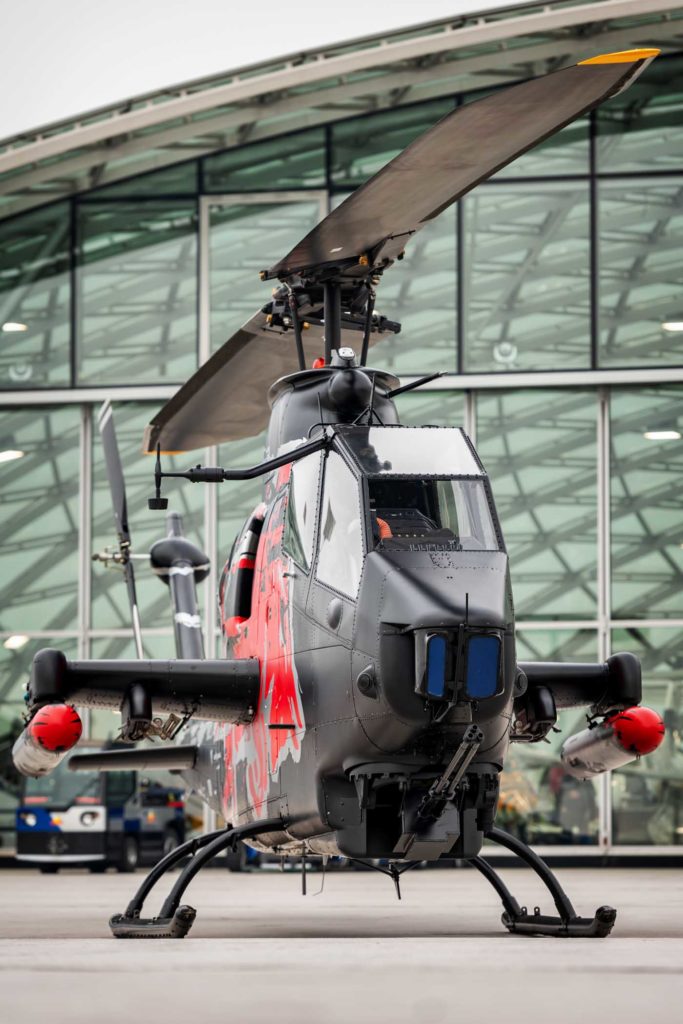
Once the photo shoot is substantially complete, Schwarz gives me a turn on the controls. As with the Mil Mi-24 Hind which entered service a few years after the Cobra — and which I had the opportunity to fly in 2017 — the Cobra’s front seat is designed primarily for shooting, not flying. The Hind’s designers gave the co-pilot/gunner plenty of room by creating a stowing mechanism for a conventionally floor-mounted cyclic. Bell instead gave the co-pilot a side-mounted cyclic, prefiguring by 50 years the sidestick controllers on the state-of-the-art, fly-by-wire Bell 525.
I haven’t flown the 525 yet, but I’m guessing its cyclic control is a little smoother than the Cobra’s. Nevertheless, it doesn’t take long to get used to the sidestick controller. Like the Huey it’s derived from, the Cobra is an easy helicopter to fly, although obviously more agile and responsive. Unfortunately, I won’t get a chance to put it through its paces, as clouds are once again starting to pool in the low-lying terrain around Salzburg. We turn back to the airport, racing to make it home before the weather shuts us out.
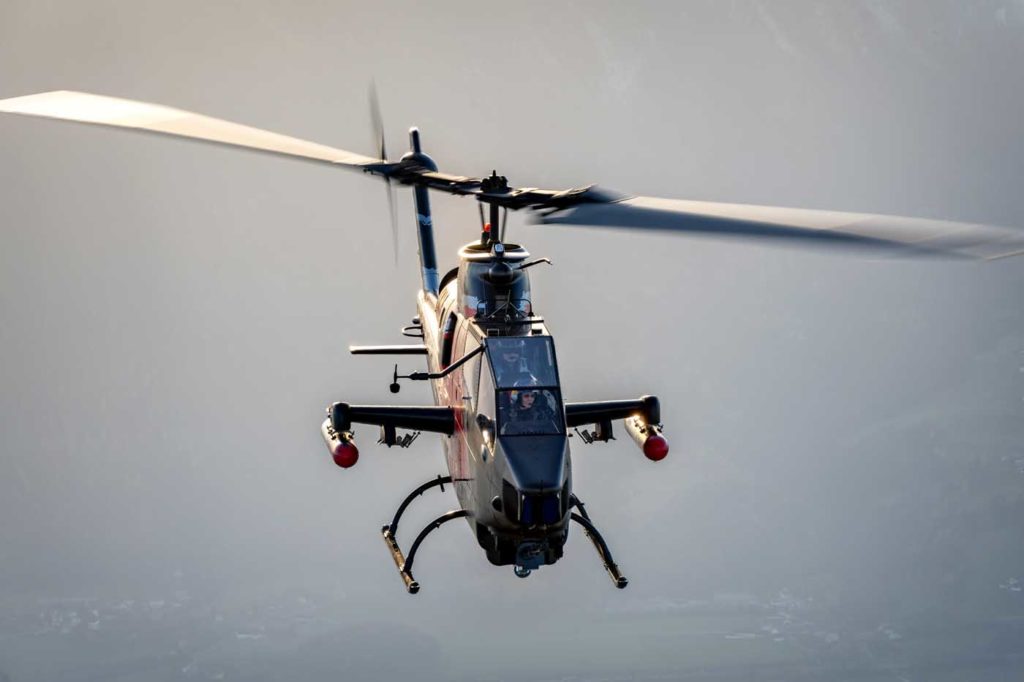
We’re too late. Fog now blankets the airport, and it quickly becomes apparent that no visual flight rules traffic will be getting in or out for the rest of the day. It’s time for Schwarz’s back-up plan, which is an approved off-airport landing zone at a Red Bull property about a 10-minute flight away. That location is at a higher elevation, so it’s still above the clouds when we land and shut down on a grassy field. Visible moisture continues to pool in the valleys, however, and by the time we catch a ride back with Red Bull chief fixed-wing pilot Raimund Reidmann, the fog is so thick that even driving is a challenge.
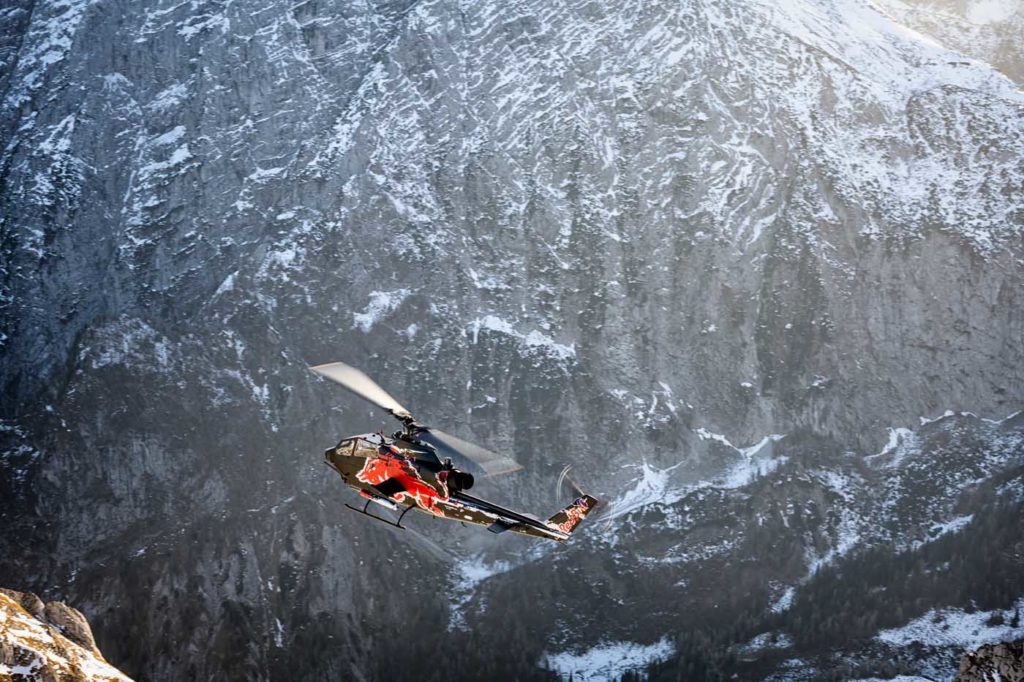
The dreary weather persists into the next day, and I’m not able to stick around long enough to see the Cobra safely returned to Hangar-7. I have to imagine it back under its glass dome, patiently waiting out winter and a surging pandemic. Summer will return eventually, along with air shows, and with them, we have to hope, some sense of normalcy. When they do, the Cobra will be ready.






